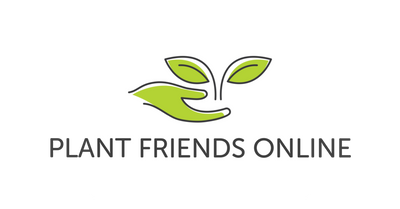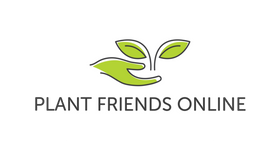Grow Guide: Eucalyptus pulverulenta 'Baby Blue'
Silver-leaved mountain gum 'Baby Blue'

Summary Highlights:
|
Attribute |
Details |
|
Ultimate Height |
2.5 - 4 meters (8 - 13 feet) |
|
Ultimate Spread |
1.5 - 2.5 meters (5 - 8 feet) |
|
Time to Ultimate Height |
10 - 20 years |
|
Growing Conditions |
Soil Types: Chalk, Clay, Loam, Sand Moisture: Moist but well-drained pH: Acid, Alkaline, Neutral |
|
Position |
Sunlight: Full sun Aspect: South-facing, West-facing, or East-facing Exposure: Sheltered |
|
Hardiness |
H5 (Hardy in most places throughout the UK even in severe winters) |
|
Colour & Scent |
Stem: Aromatic, Silver-blue Foliage: Silver-blue, retains colour throughout the year Flower: Rare, insignificant Fragrance: Foliage is aromatic |
|
Seasonal Interest |
Spring - Winter: Decorative foliage; strong year-round appeal |
Care Tips
- Sunlight: Plant in a location that receives full sun to ensure the best growth and foliage colour.
- Watering: Water young plants regularly until they are established. For mature plants, allow the soil to dry out slightly between waterings to avoid root rot.
- Soil: Choose well-draining soil with good aeration. Eucalyptus 'Baby Blue' is adaptable to a variety of soil types, but ensure the soil is not prone to water-logging.
- Temperature: The plant is hardy and can tolerate cold down to -15°C (5°F), making it suitable for most temperate regions.
- Pruning: Regular pruning is recommended to maintain a compact shape and promote bushy growth, which is particularly important for indoor or container-grown plants.
- Fertilisation: During the growing season, use a balanced, slow-release fertiliser to support healthy growth.
- Propagation: Can be propagated through seeds or cuttings. Cuttings are preferred for maintaining specific plant characteristics.
- Pest & Disease Management: Monitor for pests like aphids and diseases such as root rot. Good airflow and proper watering practices help prevent issues.
This guide provides a comprehensive overview of the essential requirements and care instructions for Eucalyptus pulverulenta 'Baby Blue', ensuring you can cultivate this beautiful and aromatic plant successfully in your garden or home.

Deep Dive
Eucalyptus pulverulenta ‘Baby Blue’, commonly known as Baby Blue Eucalyptus or Silver-leaved Mountain Gum, is an appealing plant with both aesthetic and practical applications. Native to the highlands of New South Wales, Australia, this variety is cherished for its unique powdery-blue, rounded leaves and aromatic foliage. It is often used in floral arrangements, gardens, and even as a container plant indoors due to its manageable size and striking appearance.
Cultivation and Growth
This evergreen tree can grow up to 30 feet tall when planted outdoors, but it typically maintains a more compact size when grown in containers or pruned regularly. The Baby Blue Eucalyptus thrives in full sunlight, which enhances its foliage colour and overall health. It prefers well-drained soils and is adaptable to various soil types, including loam, sand, and even slightly clayey soils. The plant is drought-tolerant once established, making it suitable for regions with dry spells. However, young plants require regular watering to help them establish their roots.
In terms of climate, Eucalyptus pulverulenta is H5 (Hardy in most places throughout the UK even in severe winters) (USDA zones 8 to 11), tolerating mild frost and cooler temperatures but struggling in prolonged cold. For optimal growth, it benefits from a warm environment with good air circulation to prevent moisture-related diseases like root rot.
Care and Maintenance
Caring for Baby Blue Eucalyptus involves regular pruning to maintain its shape and promote bushier growth. This is especially important when the plant is used for decorative purposes in floral arrangements, as it encourages the production of more of its desirable juvenile foliage. Pruning also helps control its size, making it easier to manage whether it’s grown indoors or outdoors.
Watering should be balanced—keeping the soil moist but not waterlogged. Allow the top layer of soil to dry out between waterings, especially when grown indoors. Overwatering can lead to root rot, a common issue with Eucalyptus plants.
Fertilisation isn't always necessary, but during the growing season, applying a balanced, slow-release fertiliser can support robust growth. For those growing the plant indoors, it’s advisable to place it in a bright spot with plenty of sunlight, such as near a south-facing window. The plant prefers lower humidity levels, which makes it well-suited to indoor environments.
Propagation and Uses
Eucalyptus pulverulenta can be propagated through seeds or cuttings, though cuttings are often preferred to ensure the new plants retain the same desirable characteristics. Seeds can be sown in well-draining potting mix, while cuttings should be rooted in a similar medium and kept moist until they establish roots.
Beyond its ornamental uses, Baby Blue Eucalyptus leaves are also prized for their essential oils, which have applications in aromatherapy and natural remedies. The leaves can be dried and used in potpourri or as a fragrant addition to wreaths and other crafts.
Common Issues and Pests
While relatively low-maintenance, Baby Blue Eucalyptus can face problems like rust, canker, and occasional pest infestations. Regular inspection and maintaining good airflow around the plant can help prevent these issues. If grown indoors, it is less likely to suffer from pests, but it's still important to monitor for signs of trouble.
Overall, Eucalyptus pulverulenta 'Baby Blue' is a versatile and attractive addition to gardens and homes alike, offering both beauty and practicality with its unique foliage and aromatic properties. Whether grown outdoors as a landscape feature or indoors as a container plant, it requires thoughtful care but rewards gardeners with its distinctive and enduring appeal.
You can purchase Eucalyptus pulverulenta 'Baby Blue’ from us here


